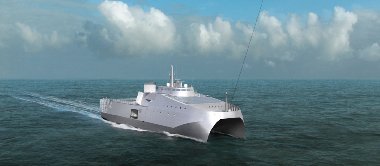Quentin de Gromard, M. Maxime (2024) Étude de couche limite turbulente en convection naturelle, avec le modèle de turbulence k−ε à deux couches PFE - Projet de fin d'études, ENSTA.
Fichier(s) associé(s) à ce document :
| PDF 2842Kb |
Résumé
Les réacteurs nucléaires de type SMR (Small Modular Reactor) ont l’ambition d’utiliser des principes de sûreté passive, comme l’extraction de puissance résiduelle du réacteur vers la piscine d’eau dans laquelle il est immergé. Cela représente un échange de chaleur important, qui doit être assuré par convection naturelle. Les études de sûreté ont la mission de démontrer que le choix de la convection naturelle est suffisant pour éviter une montée en température menaçant les composants du réacteur. Elles se fondent sur l’expérience et la simulation numérique. Or, la configuration envisagée pour les SMR fait intervenir des nombres de Rayleigh Ra importants, allant jusqu’à Ra = 10e15. Nous ne disposons pas actuellement de corrélation établie pour le transfert de chaleur au delà de Ra ≈ 10e12. Étant données les difficultés à réaliser une expérience directe, le choix se porte sur une expérience similaire en termes de nombre de Rayleigh avec de l’hélium cryogénique, permise par l’existence du cryostat du CEA Grenoble. Parallèlement, des simulations LES ont été menées par Songzhi et al. [18] pour préparer cette expérience. Leur coût important en temps et en ressources de calcul oriente vers la réalisation de simulations RANS, plus économes. Nous avons choisi le modèle de turbulence k−ε à deux couches pour simuler différents cas de convection naturelle. Dans un premier temps, nous avons procédé à la validation du modèle, grâce à l’expérience en air de Tsuji et Nagano [12]. La simulation en deux dimensions prédit correctement les valeurs de vitesse et de température moyennes dans la couche limite. Elle retrouve aussi les corrélations entre nombre de Rayleigh et nombre de Nusselt dans la couche limite laminaire et la couche limite turbulente. Néanmoins, la transition du régime laminaire au régime turbulent est retardée par rapport à l’expérience. En outre, la simulation en trois dimensions ne réduit pas les écarts aux données expérimentales. Cela semble indiquer une insuffisance du modèle de turbulence choisi. Dans un deuxième temps, nous avons effectué une simulation RANS adoptant la même configuration que la simulation LES en hélium cryogénique. Les résultats de vitesse et de température moyennes sont cohérents physiquement, mais montrent des écarts conséquents à la LES. La corrélation du taux de transfert de chaleur établie pour la couche limite turbulente est retrouvée, mais pas celle pour le régime laminaire. La transition laminaire-turbulent n’apparaît pas non plus.
| Type de document: | Rapport ou mémoire (PFE - Projet de fin d'études) |
|---|---|
| Mots-clés libres: | simulation numérique, RANS, couche limite turbulente, convection naturelle |
| Sujets: | Mécanique des fluides et énergétique |
| Code ID : | 10430 |
| Déposé par : | Maxime Quentin de gromard |
| Déposé le : | 09 oct. 2024 19:33 |
| Dernière modification: | 09 oct. 2024 19:33 |








